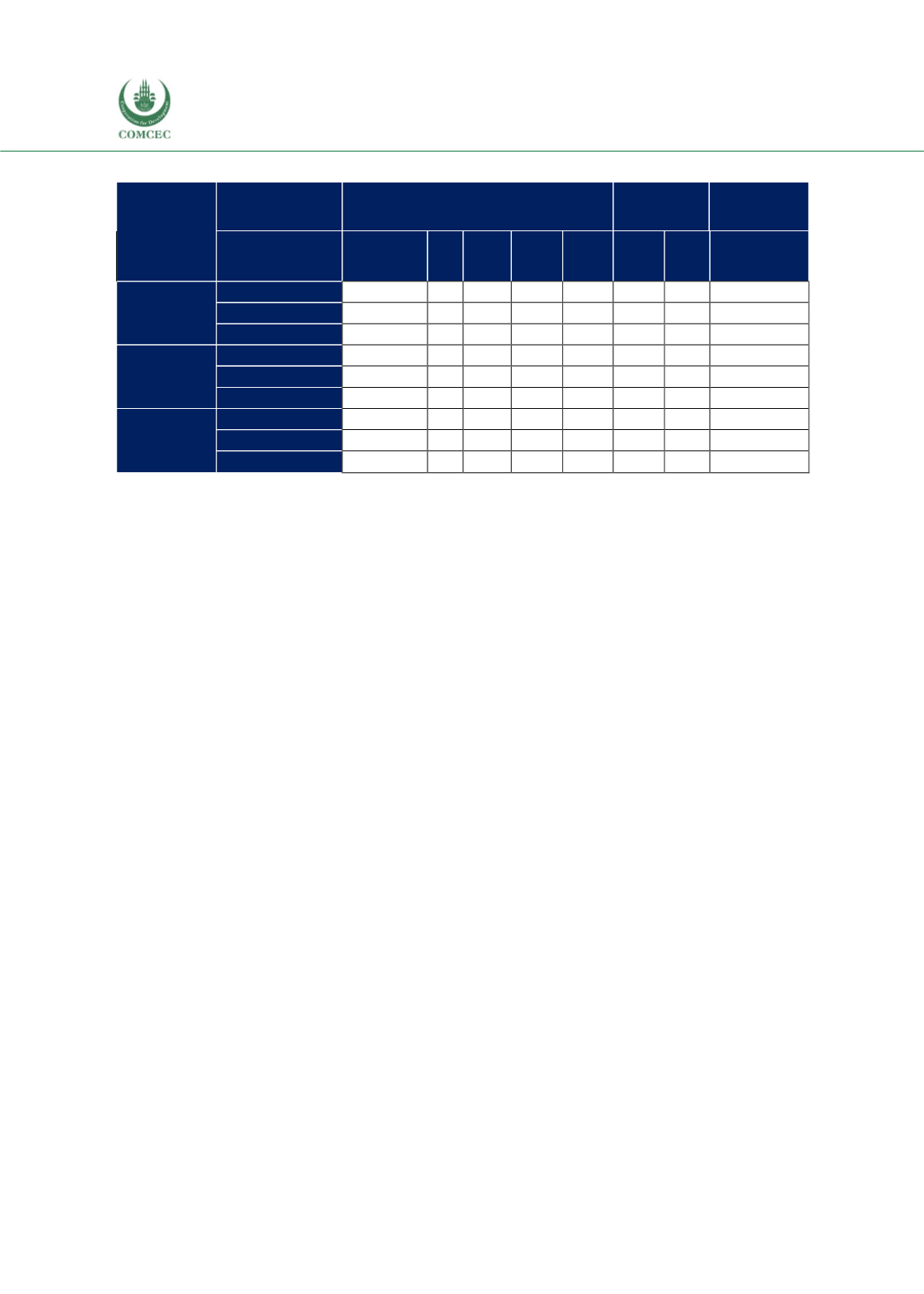

Reviewing Agricultural Trade Policies
To Promote Intra-OIC Agricultural Trade
50
Table 3. 6 Groups’ NTMs (Number of Products Regulated, In Force)
All Members
Bilateral
Total
Imposing
members
Export
subsidies QR SPS
TRQ TBT
SPS
AD
Agri-Food
African group
11
2
2
15
Asian group
40
6
188
15
5
58
312
Arab group
109
29
10
159
307
Fish
African group
1
1
2
Asian group
1
1
12
1
3
18
Arab group
4
1
5
10
Agri-Raw
African group
1
1
2
Asian group
4
1
1
3
1
10
Arab group
1
1
Source: WTO I-TIP, CEPII BACI, Eurostat RAMON, UN Comtrade, UN Trade Statistics, and authors’
calculations. Note: QR: Quantitative restrictions, SPS: Sanitary and Phyto-Sanitary, TRQ: Tariff Rate
Quotas, TBT: Technical Barriers to Trade, AD: Anti-Dumping
In contrast with the cases of tariffs and agreements, data availability regarding the NTMs stands
out as a serious limitation. For many OIC member countries, the NTM data at the product
division level is not available from the WTO I-TIP and the WITS databases. Notwithstanding
these limitations, a look at Table 3.6 showing the number of NTMs reveals that, in terms of
number and variety of measures in force, the Asian group is leading with 312 NTMs, compared
to 307 NTMs applied by the Arab group in agricultural products. Although the numbers are quite
insignificant compared to the agri-food category, the second highest numbers are in fish
products, again with the Asian group leading and being followed by the Arab group. The
available data indicate that the African group applies only one quantitative and one sanitary or
phyto-sanitary measure. The product category least protected by the OIC member countries
with NTMs is the agricultural rawmaterials. The most widely used NTMs are by far sanitary and
phyto-sanitary measures both applied to all members (217 in total) and bilaterally (228). Here,
the low use of those measures by the African group needs to be underlined as only 3 measures
in this category are applied to all members.
3.3.2. Measures directly affecting exports (Export procedures and requirements)
Measures directly affecting exports are mostly hidden and difficult to detect. The WTO database
provides only the number of products for which export subsidies are in force. The Nairobi
Decision of 2015 was considered as the “most significant outcome on agriculture” in the WTO’s
20-year history. One of the most central decisions of the Nairobi Package is a Ministerial
Decision on Export Competition, including a commitment to eliminate subsidies for farm
exports. The agricultural decisions also comprise public stockholding for food security, a
safeguardmechanism for developing countries, and measures related to cotton. There were also
specific decisions to provide preferential treatment for least developed countries (LDCs) in the
area of services and the criteria to be used for allowing trade preferences to the exports from
the LDCs. Ministers noted that the Global Financial Crisis in 2008 resulted in lowering global
economic growth, depressing agricultural prices, raising inequalities and unemployment.
















